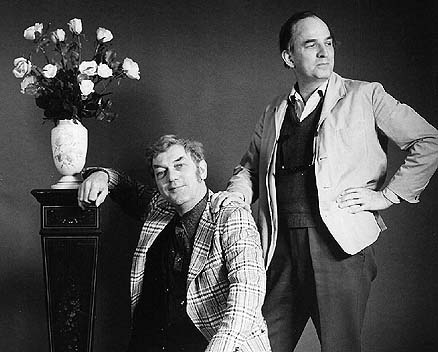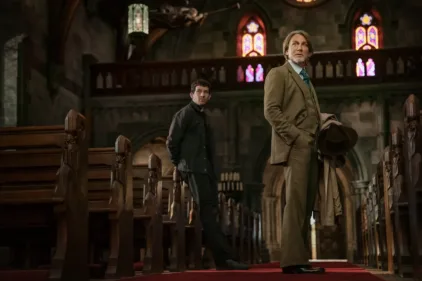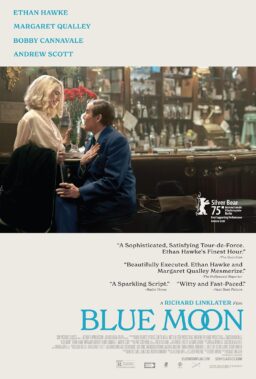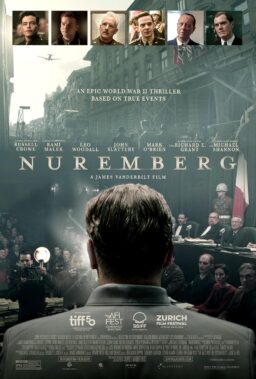Stockholm, 1975 — When he is in Stockholm, Ingmar Bergman lives in a new apartment complex called Karlapan. It’s comfortable, not ostentatious; Bergman doesn’t often have friends in because he considers it not a home but a dormitory to sleep in while he’s making a film. His wife Ingrid prepares meals there, but if the Bergmans entertain it is more likely to be at his customary table in the Theater Grill, a stately restaurant directly across the street from the back door of the Royal Dramatic Theater. The table is not easily found, or seen; it is behind a large mirrored post, so that Bergman, who can see everyone in the room, is all but invisible.
During the eight or ten weeks it takes him to direct a film, Bergman awakens at a reasonable hour, around eight, and drives to Film House in a little maroon car. Film House is a large modern structure twenty-five minutes’ walk from the center of Stockholm, and it houses not only film and television production facilities but also the theater, film and dance faculties of the University of Stockholm. The building is always filled with discussion and activity, much of it centered around the bar of the Laurel and Hardy Pub on the second level, but when Bergman is in residence to make a film, a certain self-consciousness seems to descend on Film House. It’s the same, I was told, as when the Pope is in the Vatican.
Bergman parks in a reserved space near the side door of Film House and joins his actors and technicians for breakfast. It is served in a cluttered little room presided over by the hostess for this picture; for every film he makes, Bergman hires a hostess, and lists her in the credits. Her job is to make coffee and serve afternoon tea and fuss over people in a motherly sort of way. When you are making a picture about the silence of God, or metaphysical anguish, or suicide — as Bergman usually is — it helps if everyone feels right at home and there’s a pot of coffee brewing.
The film he is working on today will be called “Face to Face,” and it is about an attempted suicide by a self-tormented psychiatrist, who will be played by Liv Ullmann. “For some time now,” Bergman wrote in a letter to his cast and crew, just before production began, “I have been living with an anxiety which has had no tangible cause.” His attempt to work it out led to the screenplay for “Face to Face,” in which the woman will face her terrible dread (common enough in Bergman), will attempt to surrender to it (also nothing new), but then will transcend it, will have a small victory over her darker nature (this hopefulness has only started to emerge in Bergman’s work in the past three or four years, since “Cries and Whispers,” and is the cause of much speculation among his friends).
“Face to Face” will be Bergman’s thirty-sixth film and it comes in his thirtieth year as a director. His career falls out into a certain pleasing symmetry; After early screenplays, he began directing in 1945 as a very provincial Swedish imitator of the Italian neorealists; he had his first international success in 1955, with “Smiles of a Summer Night“; in 1965 he began work on “Persona,” that most profound of modern films; today, he is considered one of the greatest living filmmakers. For “Face to Face,” he has gathered around him once again, as he does almost every spring and early summer, his basic crew and a group of actors he has used time and again. Only occasionally will there be a new face.
Now they join him for coffee. Liv Ullmann is dressed in an old cotton shirt and a full blue denim skirt; she wears no makeup and her hair is tossed back from her forehead as if to make the declaration that she’s been asleep until fifteen minutes ago. Bergman first met her on a street corner talking to her friend Bibi Andersson, just at the moment he was casting “Persona.” He liked the way they fit together, and cast them together, on the spot. She has since become one of the most important actresses in the world, but here in Film House she is friendly and plain-spoken, more like a den mother than a star. This is her seventh film for Bergman.
Gunnar Bjornstrand, tall and stately in his seventies, gravely considers the room and leafs through his script. He was the squire in “The Seventh Seal” and the father in “Through a Glass Darkly,” and is one of the most familiar figures in Bergman’s repertory company. He has been ill recently, but he came out of retirement to play Ullmann’s grandfather in the new film, and has responded to the work so well that Bergman has expanded the role for him. This is his sixteenth film for Bergman.
Katinka Farago, a robust woman in her thirties, hardly has time for coffee; she wants a moment to speak with Bergman about the next week’s production schedule, and he listens and nods as she explains, urgently, her problems. It is the duty of a production manager to have problems; no one has ever met one who did not. Katinka came to Stockholm from Hungary in 1956, a refugee, and
got a job as Bergman’s script girl. He made her production manager a few years ago, in charge of all the logistics of time, space and money. This is her seventeenth film with Bergman.
Sven Nykvist photographs Bergman’s films. He is a tall, strong, fifty-one, with a beard and a quick smile. He is usually better- dressed than Bergman, but then almost everyone is; “Ingmar,” a friend says, “does not spend a hundred dollars a year for personal haberdashery.” Nykvist first worked for Bergman on ‘The Naked Night’ in 1953, and has been with him steadily since ‘The Virgin Spring’ in 1959. This will be his nineteenth title for Bergman, and the two of them together engineered Bergman’s long-delayed transition from black and white to color, unhappily in “All These Women” and then triumphantly in “A Passion of Anna” and “Cries and Whispers.”
Nykvist is in demand all over the world, and commands one of the half-dozen highest salaries among cinematographers, but he always leaves his schedule open for Bergman. “We’ve already discussed the new film the year before,” he says, “and then Ingmar goes to his island and writes the screenplay. The next year, we shoot — usually about the fifteenth of April. Usually we are the same eighteen people working with him, year after year, one film a year.”
At the Cannes Film Festival one year, he said, Bergman was talking with David Lean, the director of “Lawrence of Arabia” and “Dr. Zhivago.” “What kind of crew do you use?” Lean asked. “I make my films with eighteen good friends,” Bergman said. “That’s interesting,” said Lean. “I make mine with 150 enemies.”
It is very rare for Bergman to invite visitors — the word “outsiders” almost seems to apply — to one of his sets. It is much more common, during a difficult scene, for him to send one technician after another out to wait in the hall, until the actors are alone with Bergman, Nykvist, a sound man, an electrician, and the demands of the scene.
“When we were making ‘Cries and Whispers,’ ” Liv Ullmann recalls, “none of the rest of us really knew what Harriet Andersson was doing in those scenes of suffering and death Ingmar would send away everyone except just those few who must be there, and Harriet. When we saw the completed film, we were overwhelmed. It was almost as if those great scenes had been Harriet’s secret — which, in a way, they were supposed to be, since in the film she died so much alone.”
Liv is sitting in her dressing room, waiting to be called for the next scene It will be a difficult one; she must explain to her child in the film why she tries to kill herself.
“They say Ingmar has changed,” she says, “and he has. He doesn’t look the same when he walks on the set. He’s mellowed, in a nice way. He’s sweeter. We’ve all been through some hard times with him — fights on the set — but he seems more tolerant now.”












